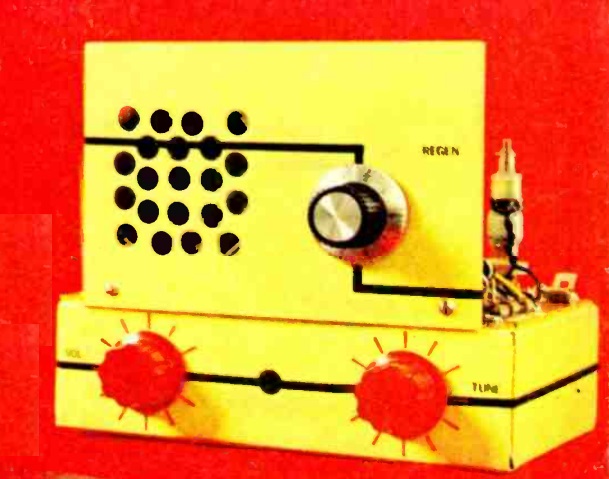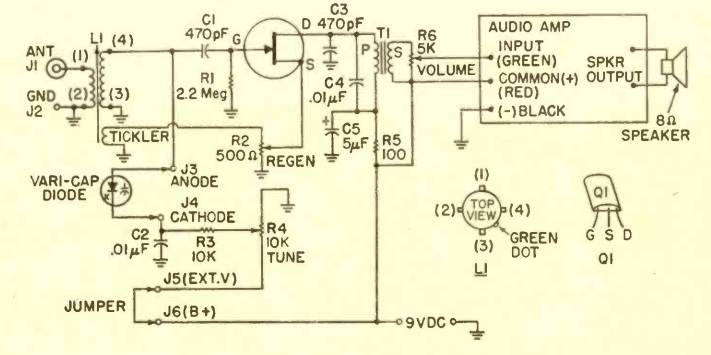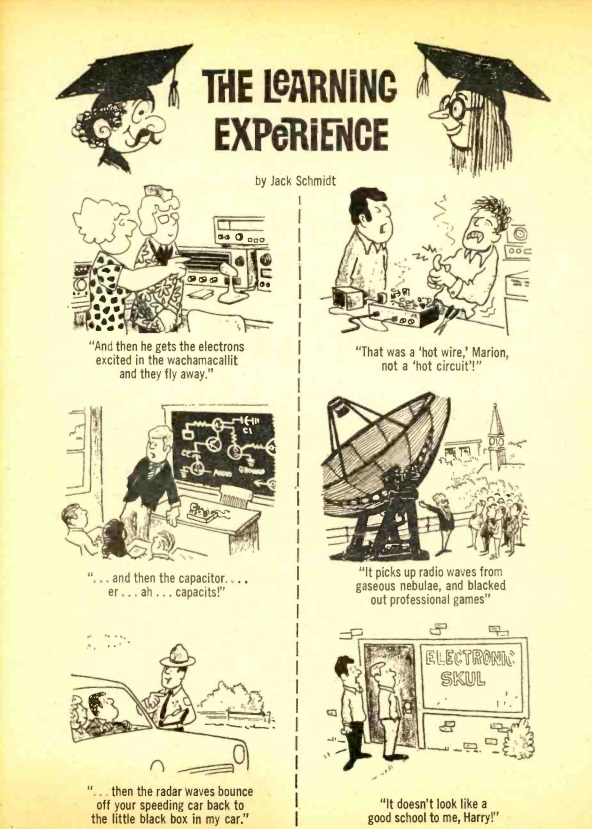 I remember this colorful receiver on the cover of Elementary Electronics for January 1974. It was a basic regenerative receiver, and used an audio amplifier module to drive the speaker. But it was more than a radio, it was a circuit for the electronics experimenter to play around with something new, the varactor diode.
I remember this colorful receiver on the cover of Elementary Electronics for January 1974. It was a basic regenerative receiver, and used an audio amplifier module to drive the speaker. But it was more than a radio, it was a circuit for the electronics experimenter to play around with something new, the varactor diode.
As the accompanying construction article noted, even though most radio components had gotten quite small, the tuning capacitor was the limiting factor, since they couldn’t get much smaller. For radios to be as small as they are today, something different was needed, and that ws the varactor diode. When reverse biased, many diodes act as a capacitor, with the capacitance varying with the voltage. Some varactor diodes were on the market, but this circuit allowed you to swap out random diodes and see how they performed. To get the circuit working, you could put a 100 pF capacitor (or maybe a standard 365 pF variable) between J3 and J4, and make sure the set was working. Then, you could try out various diodes and see how they perform.
I also remember the cartoons below, from the same issue. In this case, there was no capacitor to capacit, but the varactor took the honors instead.


